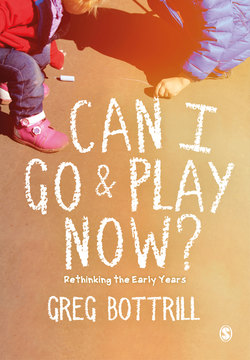Читать книгу Can I Go and Play Now? - Greg Bottrill - Страница 21
На сайте Литреса книга снята с продажи.
Children naturally test boundaries
ОглавлениеThat’s a natural part of development. They push against the adult so that the adult can show them the patience, love and discipline that they need. Without clear boundaries you open yourself to carnage. Yes, children need freedom to choose and investigate, but they need to do that within the confines of a system that enables this but at the same time also reminds them that you are the master of their universe. They are on your turf.
Your first half term is the perfect time to ensure that this happens. It doesn’t rely on you telling them the rules and then you giving time out left, right and centre until they ‘get’ it. Really, you want this to be a collaborative approach where you explain and negotiate with the children a simple charter or rule set that you all agree to follow with clear justifications for each point. You might choose to do this as a whole-class exercise or a small group one, but ultimately you want children to be active participants in setting the ground rules for the year ahead. Why should they walk inside? Is it right to dump your coat on the floor? Why should you wash your hands before eating a snack? What should they do with resources that they have got out and no longer need and why? Having these basic chats with children puts them in a position of control (with a little steering if necessary) and it also explains to them the rationale behind the universe in which they will spend the next year of their lives. Collaboration and cohesion should be at the heart of this process. It’s a fantastic Communication and Language opportunity, too. You may also choose to put up a simple display since this is, after all, a purposeful element of your day-to-day routine. You may choose not to do this, but use verbal reminders based on individual children. Only put up the display because your heart tells you to.
Of course, children are children and you will inevitably find yourself engaged in discussions about boundaries across the year, but ultimately you are looking for the children to have a concept of teamwork and togetherness, of safety and of consequence if the boundaries are crossed. Again, children look to you as the adult to ensure that this happens. They want you to be approachable and loving, but at the same time you will also need to let them know that your agreed boundaries are there for all and that the consequence is equal to all.
There is a slight caveat to that, however. Some children will find boundaries incredibly hard for many, many reasons. It’s a case of making ‘reasonable adjustments’ here: of picking battles, of making sure that you can bend slightly if you feel that the individual child will benefit from a slight tweak. Sometimes it can be appropriate to explain to the other children why you are doing this – you will need to think carefully about how to present this to them, however, as children can be prone to over-sharing at home (although most children just say ‘nothing’ to the question ‘What did you do at school today?’). Patience is key in all of this. It’s about making sure you try to think ahead and unpick triggers for behaviour too. This is where the children need you to be the adult – you are their ‘thinking brain’ at times, but in order to be this kind of brain, you need to think like a child too. Are my carpet times noisy and lacking in focus from the children? Does the walk to the dinner hall often involve lots of noise and running? Are resources not being used with care and a sense of responsibility? If so, then it’s time to unpick what is happening. Are you in the right place in the line? Are your carpet times engaging and pacy? Have you considered what the children might be telling you through their behaviour?
When I was training to be a teacher in Cheltenham, I had the good fortune to come under the influence of the course leader, Colin Forster. He is an incredibly inspiring man who on the first day went through the whole lecture hall of around 100 students and named every single one of them. How he did it I don’t know, but from that moment I was hooked. On around the fourth week of the course we gathered in the lecture hall to hear his thoughts on Behaviour Management. In walked Colin who stood at the lectern, welcomed everybody and then said, ‘It’s quite simple. Make everything you do with children interesting to them’, and with that he walked out. And that was it. It has stayed with me ten years on because he was right.
